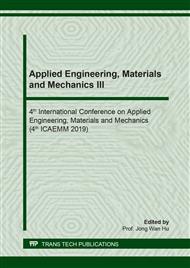p.56
p.62
p.72
p.77
p.82
p.87
p.92
p.99
p.104
Effect of Annealing Temperature on Austenite Stability of a δ-TRIP Steel
Abstract:
In this work, a novel type of δ-TRIP steel was designed, and the content and stability of retained austenite in δ-TRIP specimens under different annealing processes were detected and studied, respectively. The volume fraction of austenite was determined by X-ray diffraction (XRD). The microstructure and mechanical properties were analyzed systematically. The results show that a complex microstructure composed of three phases (ferrite, bainite and retained austenite) was obtained in the δ-TRIP steel. With the increasing of annealing temperature, both retained austenite and bainite content in the specimen increased, while the carbon content in retained austenite decreased, leading to a poor stability for retained austenite. Both tensile and yield strength improved with the increasing of annealing temperature, while the elongation reduced. The feature of retained austenite led to an excellent combination of ductility and strength, which was better than traditional TRIP steel.
Info:
Periodical:
Pages:
82-86
Citation:
Online since:
August 2019
Authors:
Keywords:
Price:
Сopyright:
© 2019 Trans Tech Publications Ltd. All Rights Reserved
Share:
Citation:


